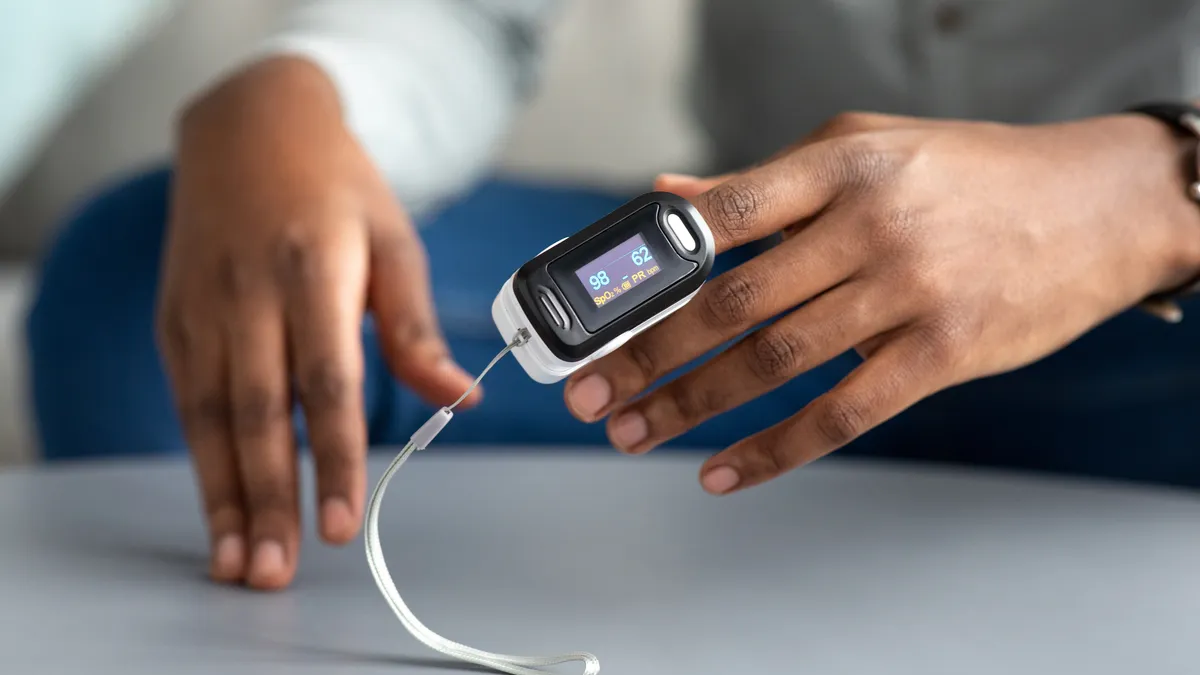Dive Brief:
- Masimo has published a retrospective analysis that found its pulse oximeter is accurate in Black patients with low perfusion or pulse strength.
- The Food and Drug Administration has warned that certain factors, including skin pigmentation and low perfusion, can affect pulse oximeter accuracy. A paper published late last year found both are associated with pulse oximeter errors. The paper studied Masimo’s Radical 7 and Nellcor’s N-595 devices.
- Masimo’s paper, which was published in the Journal of Clinical Monitoring and Computing last month, suggests its devices are free from the problem, although the study has limitations.
Dive Insight:
The FDA has looked into pulse oximeter inaccuracy over the past several years, posting a warning in 2021 and holding an advisory panel meeting earlier this month. The agency has discussed the potential for results to be affected by factors including skin pigmentation and perfusion.
Masimo, a manufacturer of pulse oximeters, has worked to show if its devices suffer from biases. In its announcement, Masimo cited a 2023 study showing its RD Set device performed similarly in people with dark or light skin in a retrospective analysis of laboratory results. The retrospective study included more than 7,000 paired data samples from 75 people who self-identified as Black or white.
The latest paper, which was written by Masimo employees, describes a secondary analysis of the dataset used in the earlier study. Researchers split the participants into low and normal perfusion groups. In Black patients with low perfusion, bias and precision were 0.19% ± 1.53%. The result is in line with the overall dataset and subgroups of Black and white patients with low and normal perfusion.
According to the researchers, the lack of bias “can be attributed to the engineering advancements of Masimo SET pulse oximetry, which were designed to address the confounders of motion, low perfusion and skin pigment.” The earlier paper saw inaccuracies in Black, low-perfusion patients, but the researchers noted that it looked at legacy Masimo and Nellcor devices.
The Masimo study has its own limitations. Other ethnic groups, such as Asian and Hispanic people, were not evaluated, and the data were collected from healthy volunteers in a controlled setting rather than in clinical practice. The setting had benefits, the researchers said, as it “helped minimize confounders that are present in clinical scenarios, allowing for greater focus on the topics of skin tone and [perfusion].”
The researchers concluded that pulse oximeter sensors are accurate in both Black and white patients during conditions of normal and low peripheral perfusion, but they also recommended “prospective clinical studies ... to further elucidate these results.”













